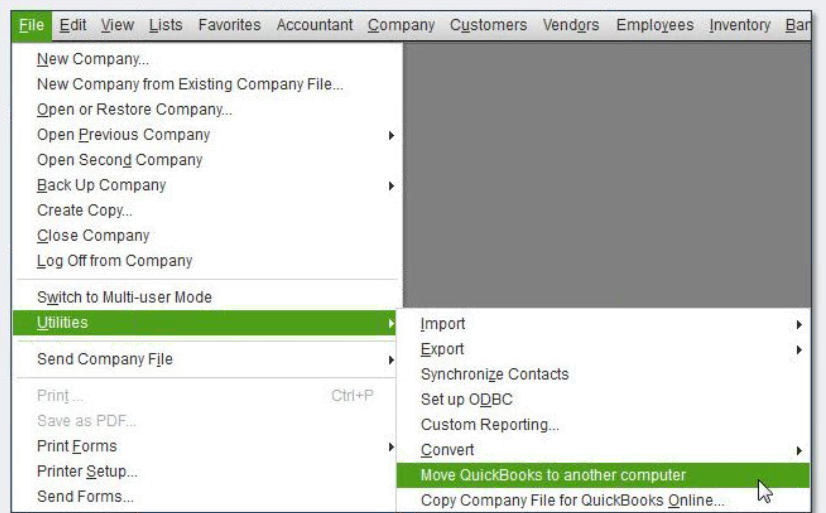by Zipbooks Admin
S Corporations, Taxes, & You

I put together a presentation on S corps for an Assembled 2017 breakout session and decided to turn it into a blog post. Maybe it’s just me, but I much prefer reading my information to watching it in video form where you are limited by the speed of the presenter.
I’m going to walk you through how having an S corporation may give you some preferred tax treatment. Then I’m going to give you some really good, detailed advice on whether or not they’re actually going to work well for you and how you can you apply some of those benefits to your own business.
Legal disclaimer
This material has been prepared for informational purposes only, and is not intended to provide, and should not be relied on for, tax, legal or accounting advice. You should consult your own tax, legal and accounting advisors before engaging in any transaction.
No warranty or representation, express or implied, is made by ZipBooks, nor does ZipBooks accept any liability with respect to the information and data set forth herein.
This presentation is for informational purposes only. I am not a licensed CPA and don’t want to represent a discussion of this topic as tax or accounting advice. ZipBooks does provide taxes and accounting services, but the purpose of this presentation is to facilitate a discussion and let you know some potential tax savings that you may not have considered before. Basically, we want to give you what you need to do your independent research on tax and accounting for S corporations.
Overview
We’re going to cover a couple different topics in this article. First we’ll consider the topic of the differences between the tax treatment of an individual versus the tax treatment of a corporation. Then we’re going to look at the details of how you can become a corporation. And after that you go into details of how you can prepare your taxes as a corporation.
Then lastly, I’m gonna walk you through two different scenarios where we’re going to consider, when the rubber hits the road, how much money is this actually going to save as a full-time small business owner. With the benefits of an S corporation there’s also the added complexity, so every time you look at the pros you also have to weigh out the additional cons of cost and complexity to make sure that it’s going to be worth it for you. Then there are the people who have a full-time job and are doing some side work and wonder if an S corp is still useful even if they aren’t a full-time business owner. So, we’ll also examine that.
The corporate treatment
I think there’s this idea floating out there that corporations are treated differently than individuals, but in System vs. United the Supreme Court decided that corporations are people and they have free speech. So, when viewing how the government and our laws view corporations, it’s important to think, “How does this benefit me? What are the ways I can take some of the existing laws about corporations and applying to myself?” So, we’re going to introduce the idea of a corporation and give you some background information.
You have to have an LLC for this even be possible, so there may be some of you out there that already have an LLC, or maybe you’re starting a business as a sole proprietor and you’re thinking that you should probably get an LLC, but aren’t sure. For example, if you have a rental property, you probably want to have an LLC and transfer ownership of that property to the LLC, as opposed to keeping it your personal property. Here are some benefits of having an LLC.
Benefits of an LLC
Asset protection
A major benefit of an LLC is that, even though it’s not a recognized status for the IRS, legally an LLC is considered separate from you as a person. So if something happens to that company, your personal assets are protected. For example, if you’re engaged in a service and someone’s not happy and they sue you individually, they can go after your personal assets. However, if they’re suing you as a company instead of as an individual, there are laws in place to protect you personally.
Pass-through taxation
Another advantage of an LLC is that the taxes are going to be less complicated then a C corporation’s taxes. To pass through taxes means that, regardless of whether you want to be taxed as a sole proprietor or as a corporation, if you have an LLC all those earnings passed onto your personal income tax filing. So, essentially you’re not getting doubly taxed. There are lots of different permutations of that, whether you’re a single member LLC or a multi-member LLC, but essentially in every case those earnings are going to show up on your personal income taxes and you’re not going to be taxed at the corporate level and the individual level. With an LLC, there’s really only one level of taxes that you’re paying.
Larger retirement contribution limits
There are a lot of beneficial laws in place for LLC owners. You’re not getting the advantage of having an established employer set up your 401K for you, so you can essentially set up your own 401K for yourself. Having an LLC brings a lot of benefits, because you’re signaling, “Hey, I’m a legitimate company and I’m serious about this being a source of income.” And now you also have the ability to do things like set up your own kind of individual 401k.
Obviously you will be contributing more to your retirement, so there might be tax implications depending on how you set that up. But you could have a situation where the taxes for some of your earnings get deferred to a later date because the retirement is up.
Tax flexibility
The last thing is tax flexibility. That’s what we’re really going to explore in this breakout session—the ability for LLCs to be taxed one of two ways.
By default, if you don’t let the IRS know what you would prefer, they’re going tax single-member LLCs as sole proprietorships and multi-member LLCs as a general partnerships.
Note: if you have business with a spouse like a rental property or some other business, if you have one LLC, that can go onto a single tax filing under married filing jointly. But if you have multiple members, then you’re going have to have a separate tax filing for that general partnership. So, it just makes taxes a little more difficult.
The other option is electing to be treated as an association taxable as a corporation. So you’re essentially telling the IRS, &ldsquo;Hey I’m not a sole proprietor. I’m actually a corporation.”
S Corporations Explained
An S corporation starts out as a regular corporation. Every corporation is taxed the same way, but some corporations qualify to be taxed under IRS subchapter S. By default, all corporations are taxed under the subchapter C, which makes them a C corp. However, you’re going to be able to qualify to have “disregarded entity” status, which essentially means that you are a corporation, but the IRS is not going to tax you as a corporation. You won’t have to pay corporate taxes. All the income is going to flow into your personal income tax and be taxed at the individual tax rates.
S corporation wages and capital gains
If you’re an S corp, your wages are going to get taxed just like they are normally. If you’re a small business and you have an LLC but you didn’t know that you could elect to be treated as an S corp, up to a limit (they don’t know exactly the limit is going to be yet, but I think it’s somewhere around the 125 range for 2017 and around 118 for 2016) you’re paying 15% on your self-employment tax. There’s no way around that. But by creating an S corp you’re saying, “Hey, I’m taking part of this as a wage and then the other part I’m going to take as a distribution from the company.” It’s taxed as an ordinary income on your individual tax return, but it’s treated as a shareholder income, so it’s not going to be subject to self-employment tax.
How to become a corporation
These ideas may be new to some of you and they may be opening your eyes to a whole world of possibilities. Or maybe this is a review for you, but you just haven’t committed to becoming a corporation yet. Either way, we’re going to explain the basic details of actually becoming a corporation.
Would my LLC qualify for IRS subchapter S treatment?
First of all, we want to know if your LLC can become a corporation, because if you can’t you might want to just keep it as a sole proprietorship, instead of creating a C Corp and having to deal with a lot of paperwork and being taxed at the corporate level and at the individual level by. It probably isn’t going to make sense. So what does IRS subchapter S actually say and how can you figure out if you can apply for this?
US Corporation
You have to be a US corporation. You can’t have foreign nationals owning part of the business.
No more than one hundred shareholders
You can’t have more than one hundred shareholders.
One class of stock
You can’t have different classes of stocks where some people have voting rights and some people don’t.
Certain industries are ineligible
There are certain industries that will be ineligible, like financial investment, insurance, or international sales. If you’re really nerdy like me and you want to read the details, you can find them in the US chapter 26, section 1362. Essentially, it says that you can’t have more than 25% of your income be derived from passive investments. So, if insurance company financial investment firms are buying equities, buying some kind of security and earning interest, or getting income from dividends and more than 25% of that amount comes from passive income, then they wouldn’t qualify for this.
Being able to qualify and actually qualifying are two different things. Here are two questions you should ask yourself when evaluating whether or not you should be an S corp and go through the hassle of setting all this up.
1. Do you make more than an employee would in your same position?
For example, as a business owner you’re earning all of the surplus from your customer. So, your customer has a willingness to pay, and you’re getting that money and keeping all of it. You’re not paying an employee. You may have fees, but as a business owner you’re going to keep everything after all the expenses. You have to look at that number and how much income you’re making and if it is significantly more than what you would be making if you were going out into the market place and getting a job as a designer or programmer or another position.
If you’re in San Francisco and going wage is 150 for your position and you’re making less than that and saving up in the self-employment taxes, it may not make sense to become a corporation. You want to make sure that the difference between what you’re making as an employer and what you’d make an employee is big enough to justify setting this up. Remember that the cap for 2017 is going to be somewhere in that 125 range and around the 118 range for 2016.
If the employee wage is less than that cap, then you take that difference in times by 15% and that’s the money that you’re saving in taxes.
2. What are your W-2 wages without your business?
If you have a full-time job and you’re making a W-2 wage that’s pretty substantial or is market wages, then you don’t necessarily have to take your side business.??
This is kind of actually how I got into this is. I was making consulting fees on top of a normal job, and my CPA told me, “you should be setting an S corp because you’re already making market wages, so most of this money that you’re making you can take as a distribution.” So that’s how I got into this in the first place.
How do I file an S corp election?
File a form 2553 Election by a Small Business Corporation.
If you know you qualify and it makes sense for you, you’re going to file a form 2553. If you plan on doing it yourself, you may want to download the instructions for the 2553.
Set up payroll for your corporation.
It’s not very fun to do your own payroll. You have to do all the withholdings and file a 491 for payroll and a lot of other complicated things. There’s a lot of great payroll services out there, so it may make sense to just set one up for yourself.
When should I file an S corp election?
Year 1: File the election within 75 days of receiving an EIN.
The IRS assumes that if you’re setting up a new business, you will file the election within the first 75 days of receiving your EIN number, or you have no intention of becoming S corp.
Year 2+: File the election form by March 15 of the following year.
Let’s say you create a business in 2017, and the 75-day window has passed for 2018, you could apply to be an S corp any time up until March 15, 2019.
There are cases where you can still apply for S corps status even if you’re not within that window. If you have questions about that, feel free to email me.
Prepare taxes like a corporation
Let’s talk about tax prep.
Quarterly S corp tax filing requirements
If you have a payroll service, they will do this for you. But you could also choose to do it yourself manually. You have to submit a 941 every quarter that tells the IRS the amount of money withheld. You can look at the forms and instructions on the IRS website. Honestly, with the pricing of a payroll service like Gusto, it makes a lot of sense to get a pay roll service to do it.
Most people who are doing consulting on the side or are running their own business probably didn’t start that business because they were wildly passionate about bookkeeping or accounting. They did it because they like programming or designing or UX—making cool things and really seeing their projects out there in the world.
Annual S Corp tax filing requirements
S corporation tax return: 1120S
The S corp has to have a separate tax return. So, if you’re having a CPA do it, just keep the additional costs in mind. Also if you do your taxes yourself, like I do, know that there will be a lot of additional work.
Basically, you will either have additional work or additional costs for this additional corporate tax filing. That tax filing is due March fifteenth.
Shareholder’s share of income: Schedule K-1
An S corp tax filing is different than the personal income tax filing, so you’re also going to be filling out K-1s. If you’re just a business owner with no employees, you will need to send that tax return off on March 15, fill out a schedule K-1, give yourself the schedule K-1, and then that’s going to show up on your personal income tax return.
Payroll tax filings: 940
If you have a payroll service, they’re going to file this 940 for you.
Personal Tax Filings
Schedule K-1 earnings show up on your Schedule E
Now you’re going to have income show up on your schedule E from your K-1 and this is your distribution. You still have the W-2 wages and those are going to be reported as normal, like you would for any other income tax return.
When applicable, Form 1040-ES estimates quarterly tax payments.
If you’re starting a new business and seeing a significant increase in income, you might want to think about maybe setting up quarterly estimated payments. The IRS isn’t super happy about really big swings from year to year in terms of how much you pay versus how much you owe, so you will want to think about that as well. If you have a CPA, they can do that for you.
Save like a corporation
Tax Savings: Corporate level
Scenario 1: Full-time, self-employed, single-member
Company net income: $120,000
Annual wages: $75,000
Shareholder income: $45,000
Let’s say you’re a full-time, self-employed, single-member LLC. Your company, after all your expenses, netted $120,000 and you asked your payroll service to set it up so that every two weeks or every month you’re getting the equivalent of a $75,000 salary annually. What that means is that on the K-1 you can now have $45,000 declared as a shareholder income or the distribution that’s not subject to self-employment tax. So all that money was going to get an extra 15% on top before you even pay your normal income tax because of the FICA withholdings like Social Security, Medicaid, Medicare, and other programs. So, you’re not having to pay that tax on that $45,000 shareholder income, which is pretty exciting.
Taxes saved
Income Tax Bracket: 25%
S Corporation Eliminates SE Tax on distributions up to ~$120,000
Tax savings: $6885
If you’re in the 25% income tax bracket and you’re switching from an S corp where someone else was being taxed as an LLC or a sole proprietor, you’re gonna save almost $7,000 on taxes. That’s hardly an insignificant amount.
Tax savings: part-time consulting
Scenario 2: Part-time consulting
Consulting income: $40,000
W-2 income: $75,000
Shareholder income: $40,000
Let’s talk about if it’s worth it to change your part-time consulting into an S corp.
Let*rsquo;s say you have your regular job and you’re life’s a little less flexible. You’re not really ready to make the jump into doing full-time with design or programming or whatever your niche is, but you just can’t stay away from your side job and passion that you love, so you end up making $40,000 in part-time side gigs during the year.
From this standpoint, you could think, “Okay, well I have a minimum wage of $75,000, and I’m also going to have this corporation running on the side, and so I’m not paying myself a wage, I’m just taking it as a distribution.”
Taxes saved
Let’s run the numbers, and you’ll see that you can save yourself quite a bit of money by going through the process of setting up an S corporation. Keep in mind, the self-employment tax is 15.3%, so every dollar you can save from being taxed as self-employment income is money earned.
A caveat on this is, obviously, if you’re $35,000 and you pay and you get that additional income on top, you may want to not take all $40,000 of it as a distribution and instead do part of it as wage. In addition to all the extra paperwork and some of the complexity, you’re going to have additional scrutiny from the IRS you wouldn’t have if you just had a personal tax return. So, you may want to take a percentage of it and then your tax savings are little bit less, but that’s something you can determine with the help of your tax professional.
ZipBooks provides professional tax, bookkeeping and payroll services
ZipBooks provides bookkeeping tax and payroll services. The bookkeeping is basically the month-to-month reconciliation of your bank account and creating a monthly income statement and balance sheet so that you understand what your estimated tax payments should be and understanding how much of this you should be paying yourself as a wage on an ongoing basis. As a business owner you can make some adjustments as you go, because the income the netting company’s coming into your business from month to month as it’s shown on your income statement may not be super consistent.





